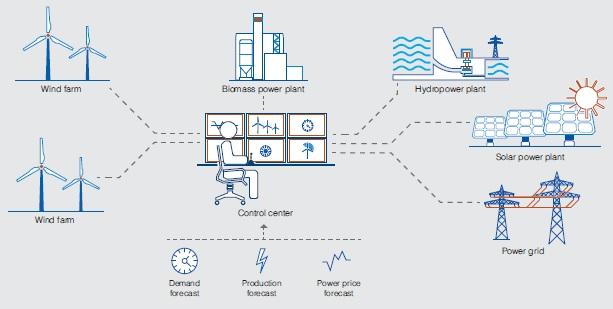Report on Elevated Lead Air Pollution in Eagan, Minnesota and its Relation to Sustainable Development Goals
Executive Summary
This report details an incident of elevated lead air pollution in Eagan, Minnesota, originating from the Gopher Resource recycling facility. Between January and March 2025, lead concentrations exceeded federal air quality standards, prompting a notice of violation from the Minnesota Pollution Control Agency (MPCA). This event directly challenges the achievement of several United Nations Sustainable Development Goals (SDGs), particularly SDG 3 (Good Health and Well-being), SDG 11 (Sustainable Cities and Communities), and SDG 12 (Responsible Consumption and Production). While the company’s function supports a circular economy, the failure to control hazardous emissions undermines public health and environmental safety, highlighting the critical role of strong institutions (SDG 16) in enforcing regulations.
Incident Analysis and Timeline
Chronology of Events
- January – March 2025: Air quality monitoring detected elevated lead levels exceeding federal standards in the vicinity of the Gopher Resource facility.
- April 2025: Subsequent monitoring indicated that lead levels had returned to concentrations considered acceptable under federal guidelines.
- May 29, 2025: The Minnesota Pollution Control Agency (MPCA) issued a formal notice of violation to Gopher Resource for exceeding lead air quality standards.
- July 2025: Eagan residents within the affected area were notified of the past elevated lead levels via a letter from the MPCA.
Impact on Sustainable Development Goals (SDGs)
SDG 3: Good Health and Well-being & SDG 11: Sustainable Cities and Communities
The release of lead, a potent neurotoxin, into the atmosphere poses a significant threat to public health, directly contravening the objective of SDG 3, Target 3.9, which aims to substantially reduce illnesses from hazardous chemicals and air pollution. The Minnesota Department of Health has affirmed that “no amount of lead in the body is safe,” with children being especially vulnerable. The pollution incident compromised the environmental safety of the Eagan community, impacting a 0.75-mile radius around the facility. This undermines SDG 11, Target 11.6, which focuses on reducing the adverse per capita environmental impact of cities, with a special emphasis on air quality.
- The highest lead concentrations were recorded along the facility’s northern property line.
- While current data has not shown higher-than-normal lead levels in local children, the risk remains a primary concern for health officials.
SDG 12: Responsible Consumption and Production & SDG 16: Peace, Justice and Strong Institutions
Gopher Resource’s operations in lead-acid battery recycling align with the principles of SDG 12 by promoting a circular economy. However, the incident represents a failure in Target 12.4, which calls for the environmentally sound management of chemicals and wastes to minimize their adverse impacts on human health and the environment. The MPCA’s regulatory action, including the notice of violation and ongoing civil investigation, exemplifies the function of SDG 16, which advocates for effective, accountable, and transparent institutions to enforce laws and protect public welfare.
Air Quality Data and Violation Details
Lead Concentration Levels
The United States Environmental Protection Agency (EPA) standard for lead in the air is 0.15 micrograms per cubic meter (µg/m3) averaged over a three-month period. Data from the MPCA monitor at Gopher Resource showed the following three-month rolling averages, which exceeded this standard for three consecutive months:
- January 2025: 0.19 µg/m3
- February 2025: 0.21 µg/m3
- March 2025: 0.23 µg/m3
- April 2025: 0.09 µg/m3
Stakeholder Responses and Future Actions
Corporate and Regulatory Statements
Gopher Resource stated it took “immediate action” upon discovering the results through its own testing, has resolved the issue, and is “implementing robust engineering upgrades and process control enhancements to ensure compliance.”
The MPCA confirmed its commitment to protecting the environment and stated that Gopher Resource had resolved the issues leading to the violation. The agency noted it could not comment further due to an open civil investigation.
Community Engagement and Remediation
To address community concerns and further assess environmental impact in line with SDG 3 and SDG 11, the following actions are planned:
- A community meeting will be held by state and Dakota County officials at the Eagan Community Center at 6 p.m. on July 22.
- Free soil testing services are being offered to residents. Samples can be submitted at the community meeting or via a drop box at the Dakota County Wescott Library from July 14 to July 18.
- The Minnesota Department of Health will analyze the soil samples to determine the extent of any potential contamination.
1. Which SDGs are addressed or connected to the issues highlighted in the article?
-
SDG 3: Good Health and Well-being
The article’s central theme is the health risk posed by elevated lead levels in the air. It explicitly mentions the Minnesota Department of Health’s statement that “no amount of lead in the body is safe” and that it is especially harmful to children, directly linking the environmental pollution to human health outcomes.
-
SDG 11: Sustainable Cities and Communities
The issue is a localized environmental problem affecting the community of Eagan. The article discusses the impact of industrial pollution on urban air quality, the notification of residents, and community-level responses like public meetings and soil testing, all of which fall under the goal of making cities safe and sustainable.
-
SDG 12: Responsible Consumption and Production
The source of the pollution is Gopher Resource, a lead-acid battery recycling company. While recycling is a key component of responsible consumption, the article highlights a failure in their production process, which led to the release of a hazardous substance (lead) into the environment. This connects directly to the need for environmentally sound management of chemicals and wastes.
-
SDG 16: Peace, Justice and Strong Institutions
The article details the role of governmental institutions like the Minnesota Pollution Control Agency (MPCA) and the U.S. Environmental Protection Agency (EPA). The MPCA’s actions of monitoring air quality, setting standards, issuing a “notice of violation,” and engaging with the community demonstrate the function of effective and accountable institutions responsible for environmental governance and justice.
2. What specific targets under those SDGs can be identified based on the article’s content?
-
Target 3.9: By 2030, substantially reduce the number of deaths and illnesses from hazardous chemicals and air, water and soil pollution and contamination.
The article directly addresses this target by focusing on air pollution from a hazardous chemical, lead. The concern for residents’ health, especially children’s, and the potential for soil contamination (evidenced by the soil testing services) are central to the issue discussed.
-
Target 11.6: By 2030, reduce the adverse per capita environmental impact of cities, including by paying special attention to air quality and municipal and other waste management.
The elevated lead levels are a clear example of an adverse environmental impact on the city of Eagan. The problem originates from a waste management facility (a recycler) and directly degrades the local air quality, making this target highly relevant.
-
Target 12.4: By 2020, achieve the environmentally sound management of chemicals and all wastes throughout their life cycle… and significantly reduce their release to air, water and soil in order to minimize their adverse impacts on human health and the environment.
Gopher Resource’s failure to prevent the release of lead into the atmosphere is a direct contravention of this target. The company’s subsequent actions to implement “robust engineering upgrades and process control enhancements” are efforts to align with the principles of environmentally sound management of hazardous waste.
-
Target 16.6: Develop effective, accountable and transparent institutions at all levels.
The role of the MPCA in monitoring the pollution, enforcing standards by issuing a violation notice, and communicating with the public through letters and a community meeting are all actions related to institutional effectiveness and transparency. The timeline of events, including the delay in notifying residents, also brings the accountability of these institutions into focus.
3. Are there any indicators mentioned or implied in the article that can be used to measure progress towards the identified targets?
-
Concentration of lead in ambient air
This is a direct, quantitative indicator mentioned in the article. The text specifies the federal air quality standard for lead (0.15 µg/m3) and provides the measured three-month rolling average values for January (0.19 µg/m3), February (0.21 µg/m3), and March (0.23 µg/m3), which exceeded the standard, as well as the April value (0.09 µg/m3) which met it. This directly measures air quality in relation to Target 3.9 and 11.6.
-
Concentration of lead in soil
This indicator is implied by the actions of the authorities. The article states that “drop-off soil testing services” will be available at the community meeting and that the Minnesota Department of Health will analyze the samples. This suggests that lead levels in soil are a key metric being used to assess the extent of the environmental contamination.
-
Enforcement actions against polluters
This is an implied indicator of institutional effectiveness (Target 16.6) and the management of hazardous waste (Target 12.4). The article explicitly states that the MPCA “issued a notice of violation to Gopher Resource for exceeding lead air quality standards.” The existence and execution of such enforcement actions serve as a measure of regulatory oversight.
-
Public access to environmental information
This is an implied indicator for Target 16.6. The article mentions that letters were sent to residents, a community meeting was scheduled, and the MPCA shared data and a chart showing lead concentration values. These actions are forms of providing public access to information, which is a measure of institutional transparency.
4. Create a table with three columns titled ‘SDGs, Targets and Indicators’ to present the findings from analyzing the article.
| SDGs | Targets | Indicators |
|---|---|---|
| SDG 3: Good Health and Well-being | 3.9: Reduce illnesses from hazardous chemicals and air, water, and soil pollution. |
|
| SDG 11: Sustainable Cities and Communities | 11.6: Reduce the adverse per capita environmental impact of cities, paying special attention to air quality. |
|
| SDG 12: Responsible Consumption and Production | 12.4: Achieve environmentally sound management of chemicals and wastes to reduce their release to air, water, and soil. |
|
| SDG 16: Peace, Justice and Strong Institutions | 16.6: Develop effective, accountable and transparent institutions. |
|
Source: fox9.com







